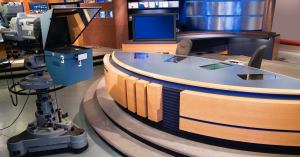Kobe Bryant’s helicopter pilot needed special clearance in order to get in the air Sunday morning thanks to the foggy conditions over Southern California. According to audio from the cockpit, pilot Ara Zobayan asked for permission to fly under special visual flight rules (SVFR) upon leaving from John Wayne Airport in Orange County at 9:06 a.m. PT. About 15 minutes later, the helicopter circled over Burbank Airport due to the poor conditions. Forty minutes after takeoff, the helicopter crashed into a mountain near Malibu Creek.
Kobe helicopter crash route via FlightAware pic.twitter.com/PMWICFCyrD
— Thenewarea51 (@thenewarea51) January 26, 2020
The pilot took off from John Wayne Airport with Bryant, 41, and his daughter Gianna Bryant, 13, among the eight passengers at 9:06 a.m., notes The Daily Mail. At 9:20 a.m., the S-76 helicopter began circling over the Burbank Airport as Zobayan encountered difficult foggy conditions.
Videos by PopCulture.com
At 9:40 a.m., Burbank Airport air traffic controller told the pilot to turn south and follow Highway 101 West, towards Thousand Oaks. Four minutes later, the helicopter turns south towards Las Virgenes Road and residents in the area began reporting a helicopter flying very low. At 9:45 a.m., the helicopter crashed, killing the pilot and all eight passengers.
The air traffic recordings revealed the pilot asked to fly under SVFR. “Maintain special VFR at or below 2,500,” he told the controller, who wondered why the pilot was given clearance to fly. After all, the Los Angeles Police Department grounded all its aircraft Sunday morning.
As the Daily Mail explains, SVFR clearance gives a pilot the clearance to fly when weather conditions are even rose than those for visual flight rules (VRF). The clearances are only given when cloud ceilings are under 1,000 feet above ground level, and flying that low can be risky. The pilot was first granted VRF clearance, which meant he was only flying using his ability to see the terrain below him. His clearance was later changed to SVFR.
Air traffic controllers later told the pilot there was poor visibility over Burbank to the north and Van Nuys to the northwest. The helicopter still continued under VFR before turning west at around 9:40 a.m. About four minutes later, uit turned southeast and climbed 2,000 feet to likely put more space between it and the high terrain.
Shortly before the crash, a controller told the pilot he was “still too low level” to be tracked by radar. The helicopter was still ascending at this time, and so the controller was likely referring to how hard it was to read data and not warning about a possible crash.
The helicopter began descending, and was at about 1,400 feet in the air when it crashed into the hillside. It was flying at about 184 mph, descending at a rate of over 4,000 feet per minute, according to Flightradar24 data.
Bryant, his daughter and the other passengers were on their way to the Mamba Academy for a basketball tournament. The closely helipad was at Amgen headquarters, six miles from the sports academy.
The others killed in the crash were Orange Coast College baseball coach John Altobelli, his wife Keri Altobelli, and their daughter Alyssa Altobelli; Sarah Chester and her daughter Patyon; and girls basketball coach Christina Mauser.
The cause of the crash is still under investigation by local and federal authorities. It is believed the weather was a cause.
“The likelihood of a catastrophic twin engine failure on that aircraft – it just doesn’t happen,” Kurt Deetz, a former pilot for Bryant, told the Los Angeles Times.
Photo credit: Getty Images









